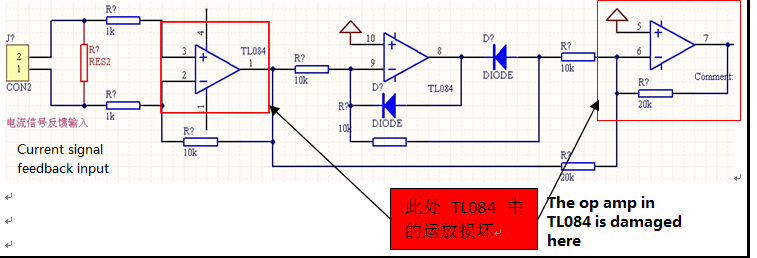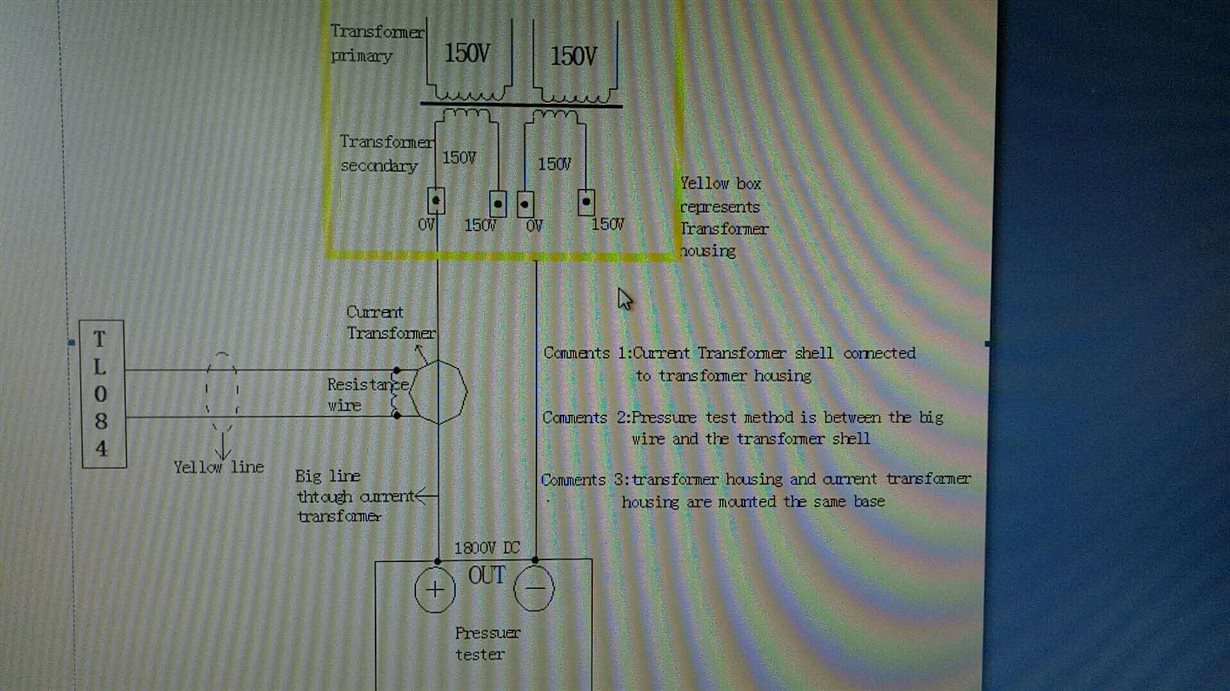hi,
The TL084 is mainly used as differential amplification and precision full-wave rectification. See the figure below:
The front end of terminal CON2 is input with a voltage signal after the current transformer is converted;
When the current transformer is subjected to a voltage test, the TL084 chip is occasionally damaged;
Current transformers are used as follows: Two yellow BVR mini wires are connected to CON2 terminal block
Withstand voltage test method: 1800V DC withstand voltage test of the casing with a large wire passing through the middle of the current transformer
I suspect there is a spike passing through the BVR yellow wire to the CON2 terminal of the board, which will damage the TL084 pin!


